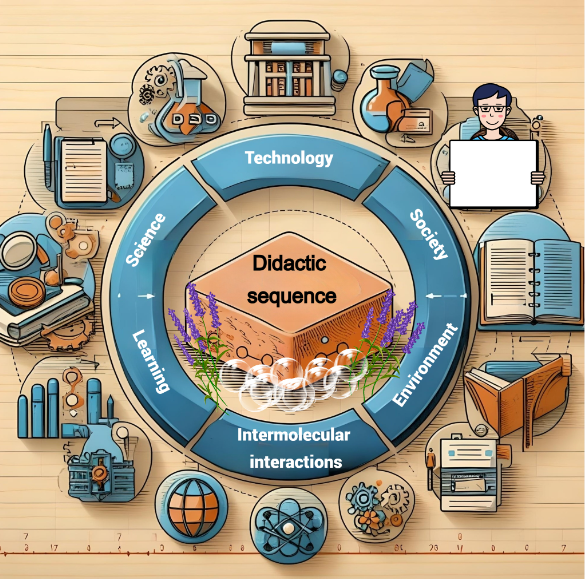THE PRODUCTION OF HOMEMADE SOAP FOR CHEMISTRY TEACHING: A DIDACTIC SEQUENCE WITH A STS/STSE FOCUS
DOI:
https://doi.org/10.36524/ric.v10i2.2456Keywords:
Didactic sequence, learning, intermolecular interactions, STSEAbstract
Secondary education is a determining stage in a student's life, as the skills and abilities acquired during this period influence the choices of future professional or academic life. In this context, this work aimed to present a didactic sequence (SD) focused on Science - Technology - Society - Environment (CTS/CTSA), its validation process, and subsequent application, addressing the chemical content of intermolecular interactions through the theme of homemade soap flavored with lavender oil. A didactic-methodological analysis of DS was carried out, in conjunction with STS/STSE education. The DS was validated by peers and applied to a 1st grade class of New High School at a state school, in the city of Venda Nova do Imigrante. This was intervention research, of a qualitative nature, whose data were produced and collected from a questionnaire sent to peers to validate the DS, questionnaires for students, the diary board (DB) of them and systematic observation of classes related to the execution of the DS. The sanitizers were obtained by recycling edible vegetable oil rejected after frying or other food activities without adequate disposal. Through the data obtained, it was noticed that the practice carried out enabled learning of intermolecular interactions as well as promoting support for environmentally responsible behavior among students.

Downloads
Published
Issue
Section
License
Copyright (c) 2024 Revista Ifes Ciência

This work is licensed under a Creative Commons Attribution-NonCommercial-NoDerivatives 4.0 International License.
Autores que publicam nesta revista concordam com os seguintes termos:
- Autores mantém os direitos autorais e concedem à revista o direito de primeira publicação, com o trabalho simultaneamente licenciado sob a Licença Creative Commons Attribution que permite o compartilhamento do trabalho com reconhecimento da autoria e publicação inicial nesta revista.
b. Autores têm permissão e são estimulados a publicar e distribuir seu trabalho online (ex.: em repositórios institucionais ou na sua página pessoal) a qualquer ponto antes ou durante o processo editorial, já que isso pode gerar alterações produtivas, bem como aumentar o impacto e a citação do trabalho publicado (Veja O Efeito do Acesso Livre).


